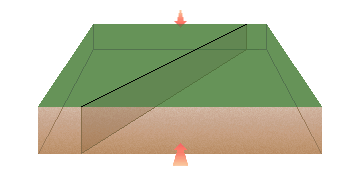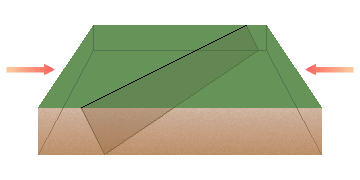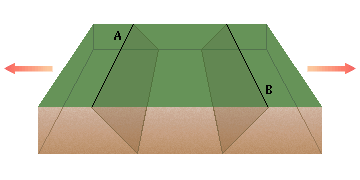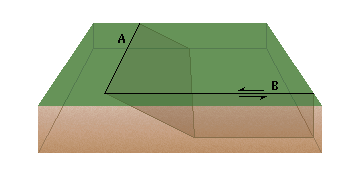Example #1

The fault shown here is vertical in dip, and strikes northeastward. Compressional forces push from the north and south sides of the block.
Example #2

This fault strikes in exactly the same northeast direction as the fault in example #1, but its dip is roughly 60 degrees to the southeast -- not vertical. In this case, compressional forces act upon the east and west sides of the block.
Example #3

Two parallel faults run across the block. Each strikes due north. The western fault, labelled A, dips at 45 degrees to the east. The eastern fault, labelled B, dips at 45 degrees to the west. Extensional tectonic forces "pull" at the east and west edges of the block.
Example #4

Two intersecting faults exist in this diagram, and are labelled A and B. Fault B has essentially a vertical dip, strikes exactly east-west, and is a left-lateral oblique fault. Fault A strikes due north, and has a shallow dip of about 30 degrees to the east.